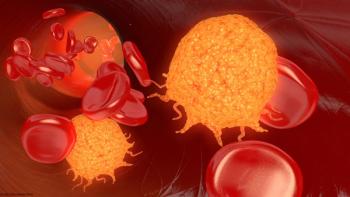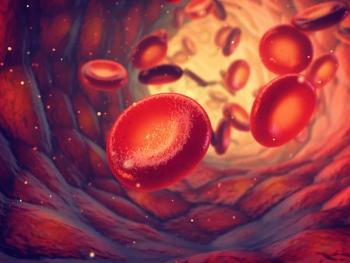
TRAIL-R2 May Promote Bone Metastases in Breast Cancer
In a mouse model, researchers found that TRAIL-R2 inhibition prevented bone metastases, suggesting a possible therapeutic strategy for breast cancer patients.
Using a mouse model of breast cancer, German researchers found that inhibition of TRAIL-R2 (TNF-related apoptosis inducing ligand receptor 2) expression impaired the formation of bone metastases and could be a promising therapeutic strategy for patients with breast cancer.
Results of the study were
“Approximately 70% of breast cancer patients in advanced tumor stages will develop metastases in the skeleton, which may cause clinically relevant morbidities such as chronic bone pain, pathological fractures, neurological compression syndromes, or severe hypercalcemia,” wrote study authors led by Hendrik Fritsche, of the division of molecular oncology at the Institute for Experimental Cancer Research, University of Kiel, Kiel, Germany. “While expression of TRAIL-R2 was shown to correlate with unfavorable prognostic markers in primary breast tumors, the impact of TRAIL-R2 in the metastatic behavior of breast cancer cells has not yet been addressed.”
In order to evaluate the role of TRAIL-R2 in bone metastasis, the researchers used a “bone seeking” variant, MDA-MB-231-BO, of the breast cancer cell line MDA-MB-231. Control cells and cells with reduced TRAIL-R2 expression were injected intracardially into SCID-beige mice.
Bone metastases developed in 73% of mice injected with control cells. By comparison, bone metastases developed in only 30% of mice injected with cells that had reduced TRAIL-R2 expression-on average, these mice had smaller tumors and there were fewer tumors per mouse.
Though TRAIL-R2 inhibition reduced bone metastases in mice injected with MDA-MB-231-BO cells, the researchers noted that once tumors started to grow in the bone marrow, the impact of TRAIL-R2 inhibition on tumor progression was less profound. This suggests that TRAIL-R2 knockdown prevents the tumor cells from spreading to the bone marrow in the first place, rather than preventing the growth of tumor cells already within the bone marrow.
“Our results suggest that targeted therapies aimed at decreasing the levels of TRAIL-R2 in primary breast carcinomas and/or circulating tumor cells may represent a promising therapeutic strategy for reducing the risk of breast cancer patients to relapse with bone metastases,” wrote the authors. “In addition, future studies may reveal TRAIL-R2 status to have a prognostic or predictive marker for high-risk patients of developing skeletal events.”
Newsletter
Stay up to date on recent advances in the multidisciplinary approach to cancer.


















































































